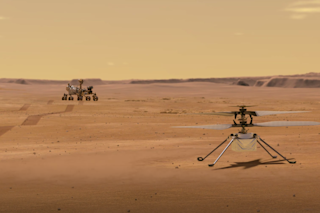When America first dreamed of sending astronauts to another world, German-American rocket engineer Wernher von Braun didn’t want to go to the moon. He wanted to send dozens of people to Mars. He envisioned a winged craft soaring through the Red Planet’s atmosphere, landing gently on the rust-colored surface. And though earthlings quickly learned that traveling to another planet isn’t so easy, the fantasy of flying on Mars never died.
And now, that dream is on the verge of being fulfilled. On July 22, NASA plans to launch its Mars Perseverance rover. But there’s also a robotic hitchhiker onboard; this small, solar-powered helicopter, named Ingenuity, is on a mission totally independent from the rover. While Perseverance searches for signs of alien life, Ingenuity will prove it’s possible to fly in Mars’ thin atmosphere. The data it gathers will help engineers build even larger helicopter drones for the Red Planet. And ...














